Preparation of High-Performance Cementitious Materials from Industrial Solid Wastes †
Abstract
:1. Introduction
2. Materials and Methods
2.1. Analysis Method
2.2. Coal Gangue
2.3. Red Mud
2.4. Fly Ash
3. Preparation and Characterization of Waste-Based Cementitious Material
3.1. Preparation of Exciter
3.2. Preparation of Material
3.3. Performance Assessment and Proportional Optimization
4. Conclusions
Author Contributions
Funding
Institutional Review Board Statement
Informed Consent Statement
Data Availability Statement
Conflicts of Interest
References
- Sun, J.; Geng, C.; Zhang, Z.; Wang, X.; Xu, L. Comprehensive utilization of industrial solid waste resources. Mater. Bull. 2012, 26, 105–109. [Google Scholar]
- Wang, X.; Li, Q.; Chen, S.; Yue, G. Application research and prospect of industrial solid waste in the field of new building materials. Silic. Bull. 2019, 38, 3456–3464. [Google Scholar]
- Liu, X.; Tang, B.; Yin, H.; Emile, M. Durability and environmental performance of red mud-highway pavement base materials. J. Eng. Sci. 2018, 40, 438–445. [Google Scholar]
- Liu, J.; Zhou, Z.; Wu, A.; Wang, Y. Preparation and hydration mechanism of low concentration Bayer red mud filling materials. J. Eng. Sci. 2020, 42, 1457–1464. [Google Scholar]
- Wei, J. Application of solid waste materials in road base. Synth. Mater. Aging Appl. 2022, 51, 162–164. [Google Scholar]
- Wang, Y.; Yuan, H.; Chen, S. Preparation of alkali-initiated gelling materials from solid waste. Chem. Miner. Process. 2022, 1–11. [Google Scholar] [CrossRef]
- Wang, R.; Wang, C.; Han, T. Experimental study on the preparation of geopolymer foam from coal gangue-fly ash. Build. Mater. Technol. Appl. 2022, 11–14. [Google Scholar] [CrossRef]
- Ye, Z.; Wang, Q. Preparation and properties of aluminosilicate solid waste gelling materials. Gold Sci. Technol. 2020, 28, 658–668. [Google Scholar]
- Gao, Y. Research on the Development and Performance of Multi-Source Solid Waste-Based Offshore Grouting Materials; Shandong University: Jinan, China, 2021. [Google Scholar]
- Wang, X.; Yang, B.; Zhao, Y.; Wang, Y. Road performance of solid waste-based gelling agent stabilized soil. J. Wuhan Univ. Technol. (Transp. Sci. Eng. Ed.) 2021, 1–9. [Google Scholar] [CrossRef]
- Wang, Q. Construction technology of industrial waste soil curing agent for soil improvement. Henan Sci. Technol. 2022, 41, 109–112. [Google Scholar]
- Wei, W. Optimization of Alkali-Inspired Cement-Based Grouting Material Ratio and Performance Study; North China University of Water Resources and Hydroelectricity: Zhengzhou, China, 2021. [Google Scholar]
- Liu, Q.; Wang, Q.; Wu, P.; Wang, J.; Lv, J. Research progress on the application of red mud in cementitious materials. J. Shandong Univ. Sci. Technol. (Nat. Sci. Ed.) 2022, 41, 66–74. [Google Scholar]
- Zhang, N.; Liu, X.; Sun, H. XPS analysis of the hydration process of red mud-gangue-based cementitious materials. Met. Min. 2014, 453, 171–176. [Google Scholar]
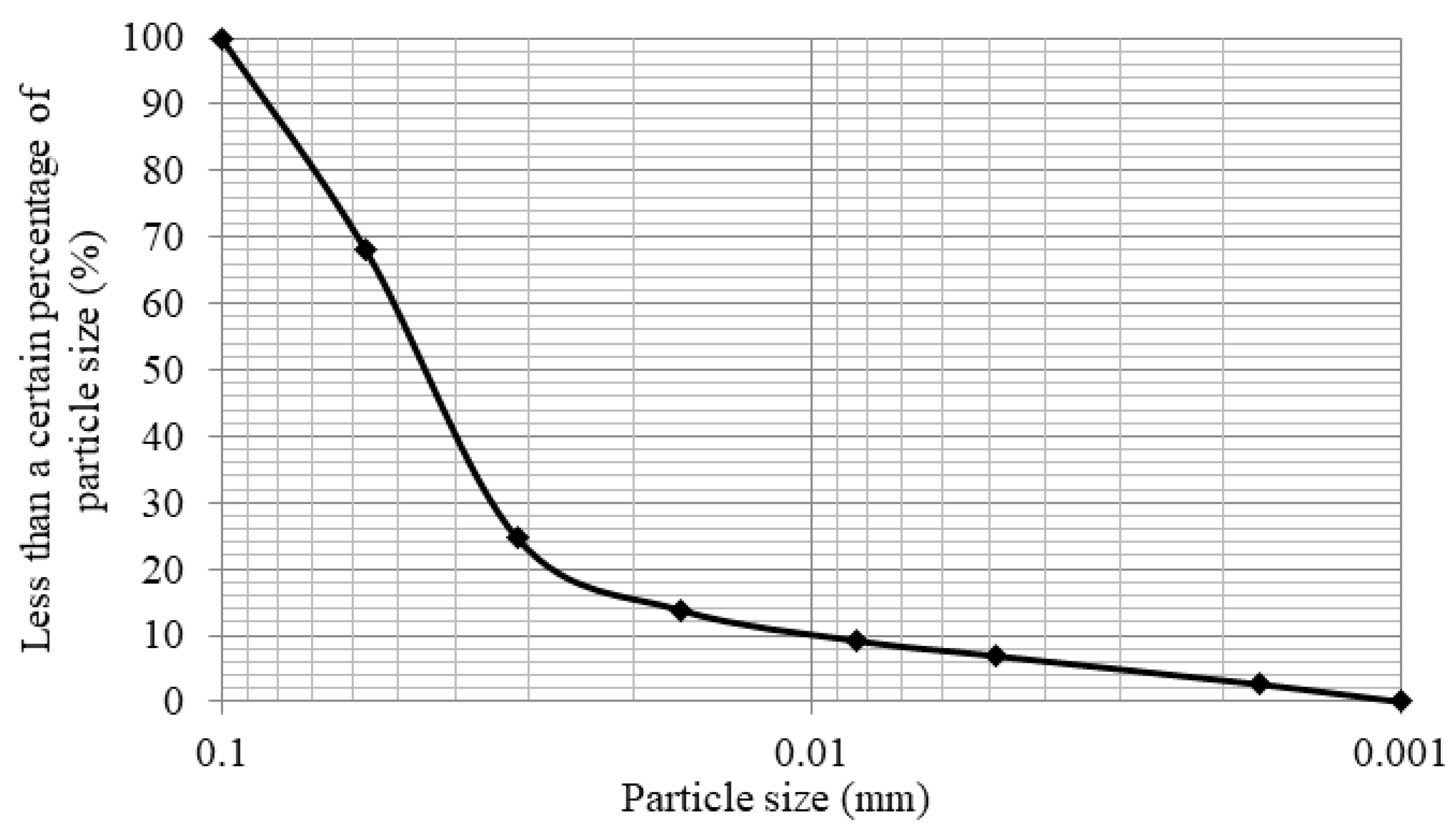
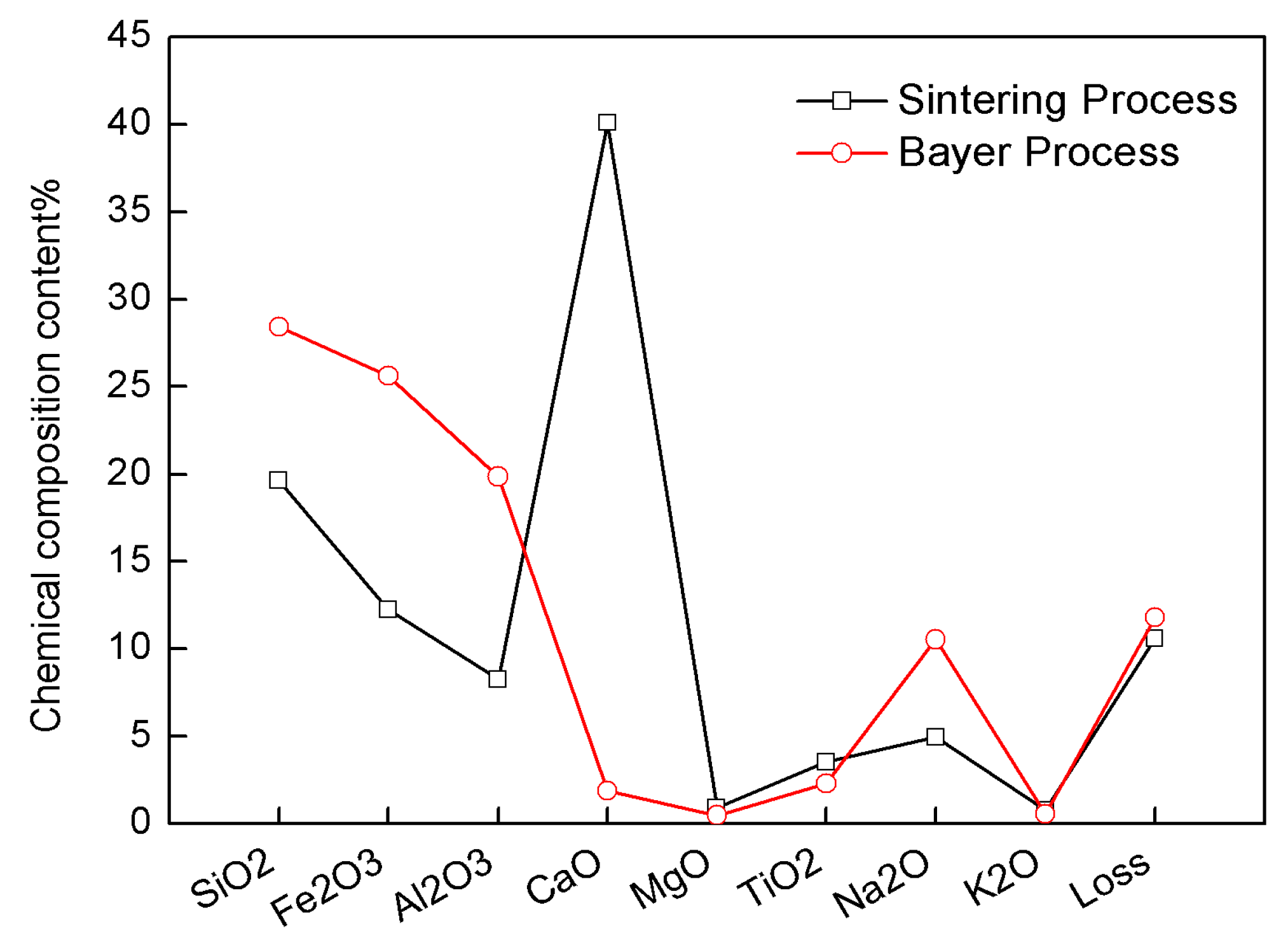
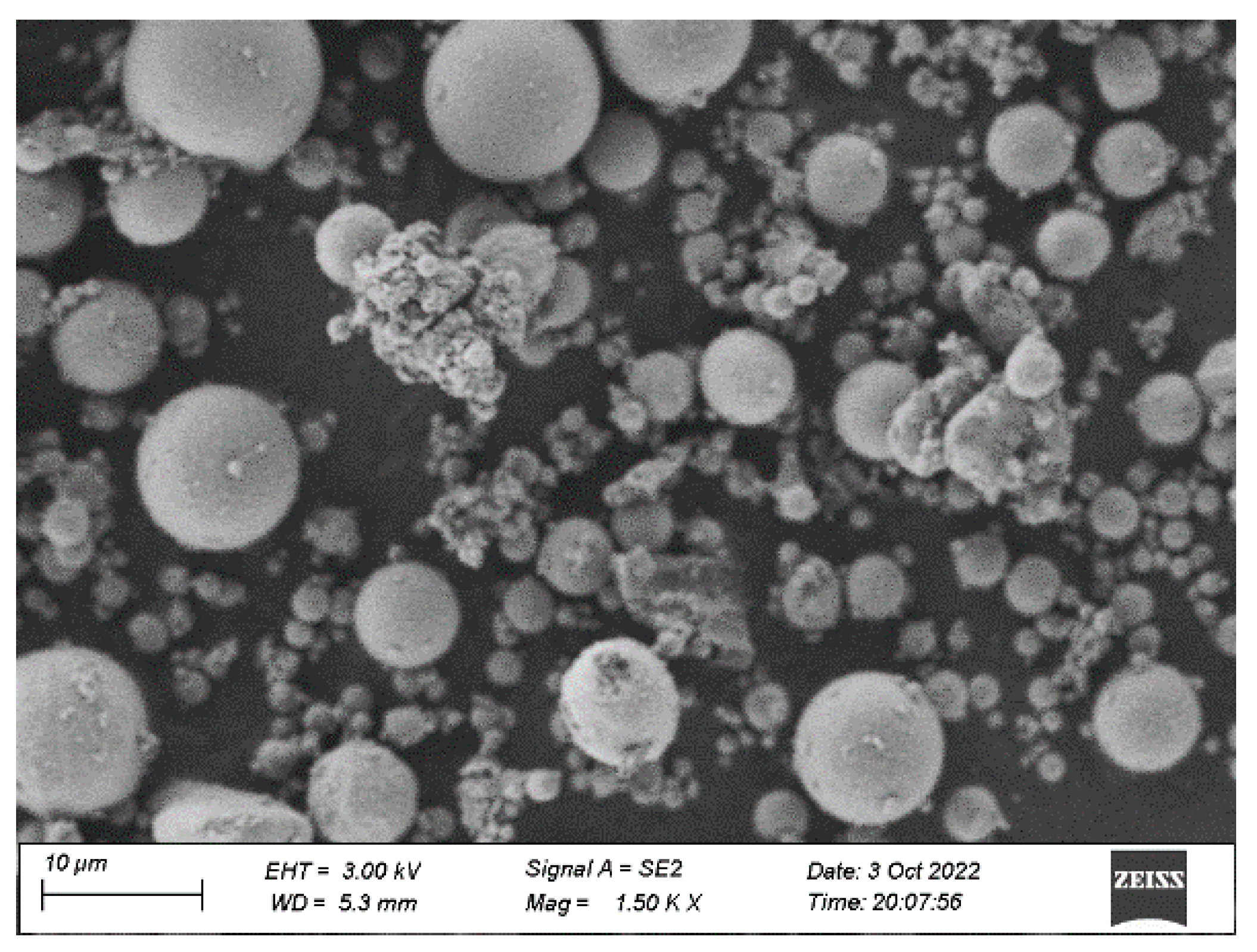
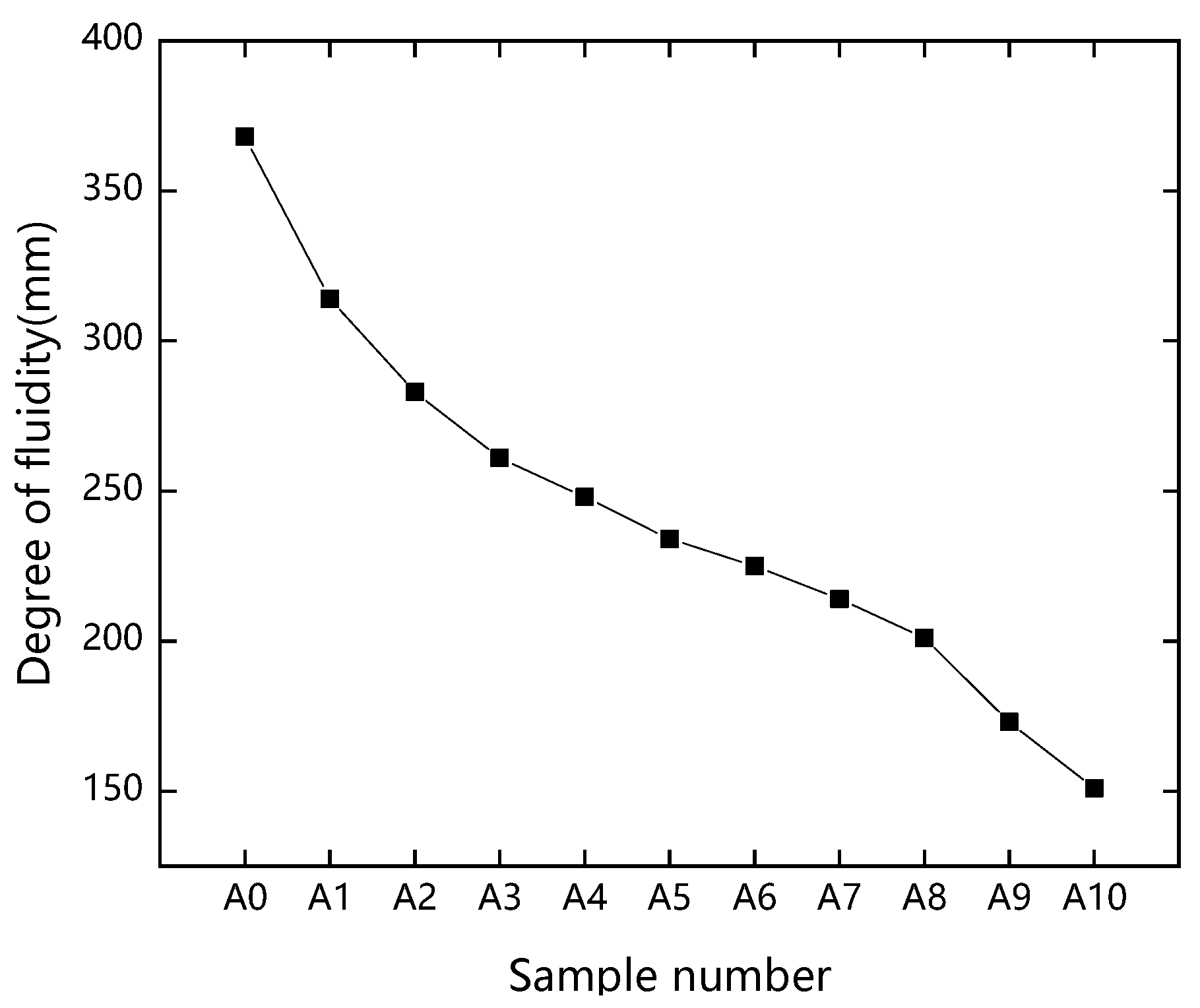
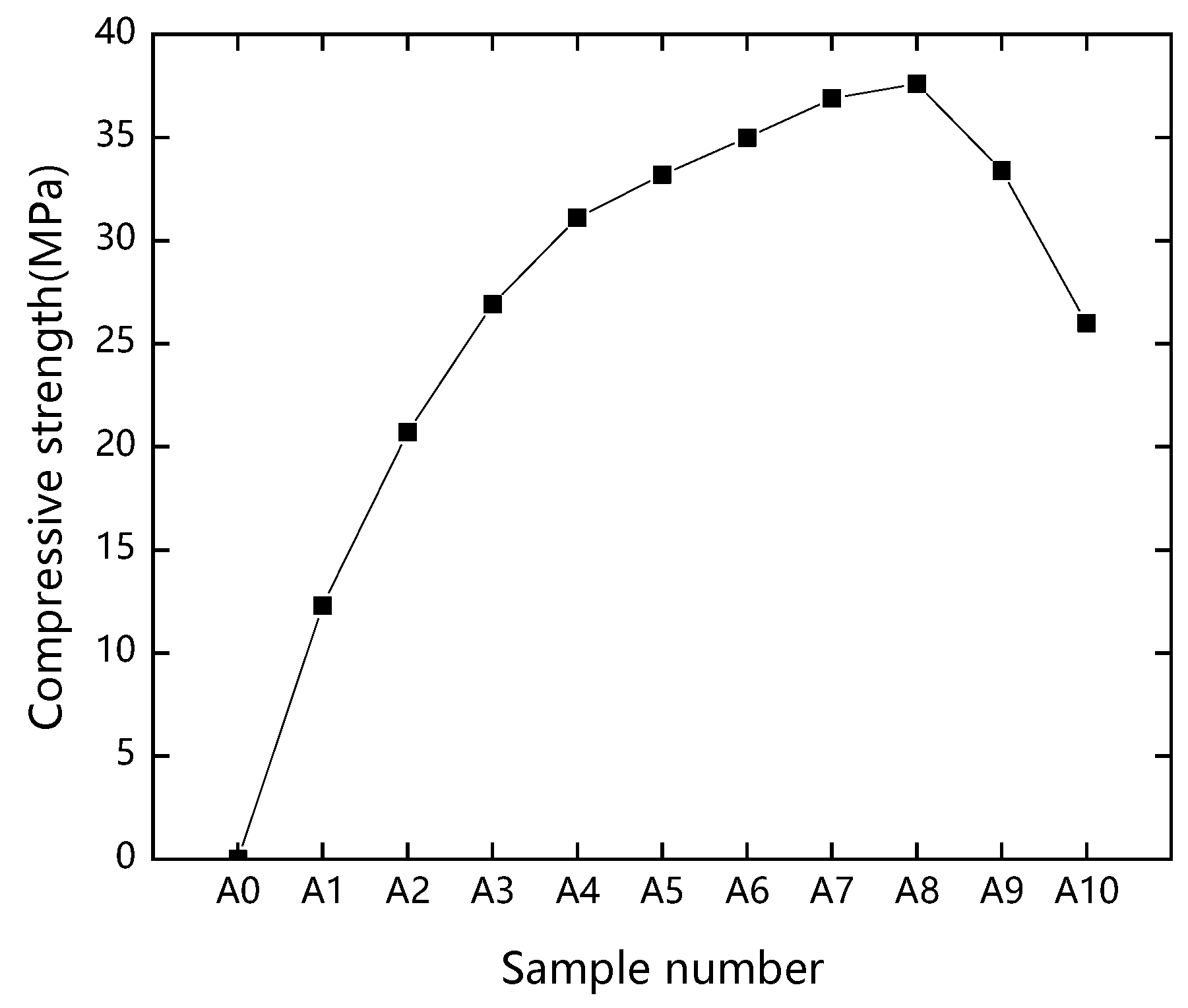
| Sample Number | Gallium (mg/kg) | Vanadium (mg/kg) | Titanium (mg/kg) | Cobalt (mg/kg) |
|---|---|---|---|---|
| 1 | 45.1848 | 5.2487 | 109.7672 | 5.0205 |
| 2 | 42.8322 | 3.9336 | 117.7885 | 4.5892 |
| 3 | 44.1345 | 5.0234 | 105.3452 | 4.9056 |
| Average | 44.0505 | 4.7352 | 110.9670 | 4.8384 |
| Analysis Number | Mineral (Chemical Formula) | Content (wt%) | Average Content (wt%) | ||
|---|---|---|---|---|---|
| Sample 1 | Sample 2 | Sample 3 | |||
| 1 | Silicate (SiO2) | 27.9 | 25.6 | 28.0 | 27.2 |
| 2 | Muscovite ((KF)2(Al2O3)3(SiO2)6) | 7.0 | 6.2 | 8.0 | 7.1 |
| 3 | Titanium oxide (TiO2) | 0.4 | 1.0 | 0.9 | 0.8 |
| 4 | Albite (NaAlSi3O8) | 7.3 | 5.7 | 8.6 | 7.2 |
| 5 | Kaolinite (2SiO2·Al2O3·2H2O) | 28.2 | 27.5 | 26.4 | 27.4 |
| 6 | Iron oxide (Fe2O3) | 5.6 | 3.5 | 4.9 | 4.7 |
| 7 | Chlorite ((Mg,Fe)5Al(Si3Al)O10(OH)8) | 7.2 | 13.5 | 6.4 | 9.0 |
| 8 | Montmorillonite ((Na,Ca)3(Al,Mg)2Si4O10(OH)2·n(H2O)) | 16.5 | 17.0 | 16.8 | 16.8 |
| Total (weight %) | 100 | 100 | 100 | 100 | |
| Samples | Average Moisture Content (%) | Average Liquid Limit (%) | Average Plastic Limit (%) | Average Plasticity Index |
|---|---|---|---|---|
| Shandong red mud | 41.4 | 50.9 | 44.0 | 6.9 |
| Weiqiao red mud | 40.7 | 48.0 | 33.4 | 14.6 |
| Zibo red mud | 44.5 | 45.2 | 31.4 | 13.8 |
| Composition | SiO2 | CaO | SO3 | Fe2O3 | Al2O3 |
|---|---|---|---|---|---|
| Content (wt.%) | 50.76 | 16.8 | 6 | 6.22 | 20.12 |
| Sample Number | Ratio in Weight (Coal Gangue:Red Mud:Fly Ash) | Water-to-Solid Ratio | Exciter Content (%) |
|---|---|---|---|
| A0 | 0:0:100 | 0.4 | 6 |
| A1 | 5:5:90 | 0.4 | 6 |
| A2 | 10:10:80 | 0.37 | 8 |
| A3 | 10:20:70 | 0.35 | 10 |
| A4 | 20:20:60 | 0.4 | 6 |
| A5 | 20:30:50 | 0.37 | 8 |
| A6 | 30:30:40 | 0.35 | 10 |
| A7 | 30:40:30 | 0.4 | 6 |
| A8 | 40:40:20 | 0.37 | 8 |
| A9 | 40:50:10 | 0.35 | 10 |
| A10 | 50:50:0 | 0.4 | 6 |
Disclaimer/Publisher’s Note: The statements, opinions and data contained in all publications are solely those of the individual author(s) and contributor(s) and not of MDPI and/or the editor(s). MDPI and/or the editor(s) disclaim responsibility for any injury to people or property resulting from any ideas, methods, instructions or products referred to in the content. |
© 2023 by the authors. Licensee MDPI, Basel, Switzerland. This article is an open access article distributed under the terms and conditions of the Creative Commons Attribution (CC BY) license (https://creativecommons.org/licenses/by/4.0/).
Share and Cite
Yang, P.; Qi, Y.; Chen, R. Preparation of High-Performance Cementitious Materials from Industrial Solid Wastes. Eng. Proc. 2023, 38, 50. https://doi.org/10.3390/engproc2023038050
Yang P, Qi Y, Chen R. Preparation of High-Performance Cementitious Materials from Industrial Solid Wastes. Engineering Proceedings. 2023; 38(1):50. https://doi.org/10.3390/engproc2023038050
Chicago/Turabian StyleYang, Peng, Yueqiang Qi, and Renshan Chen. 2023. "Preparation of High-Performance Cementitious Materials from Industrial Solid Wastes" Engineering Proceedings 38, no. 1: 50. https://doi.org/10.3390/engproc2023038050
APA StyleYang, P., Qi, Y., & Chen, R. (2023). Preparation of High-Performance Cementitious Materials from Industrial Solid Wastes. Engineering Proceedings, 38(1), 50. https://doi.org/10.3390/engproc2023038050





